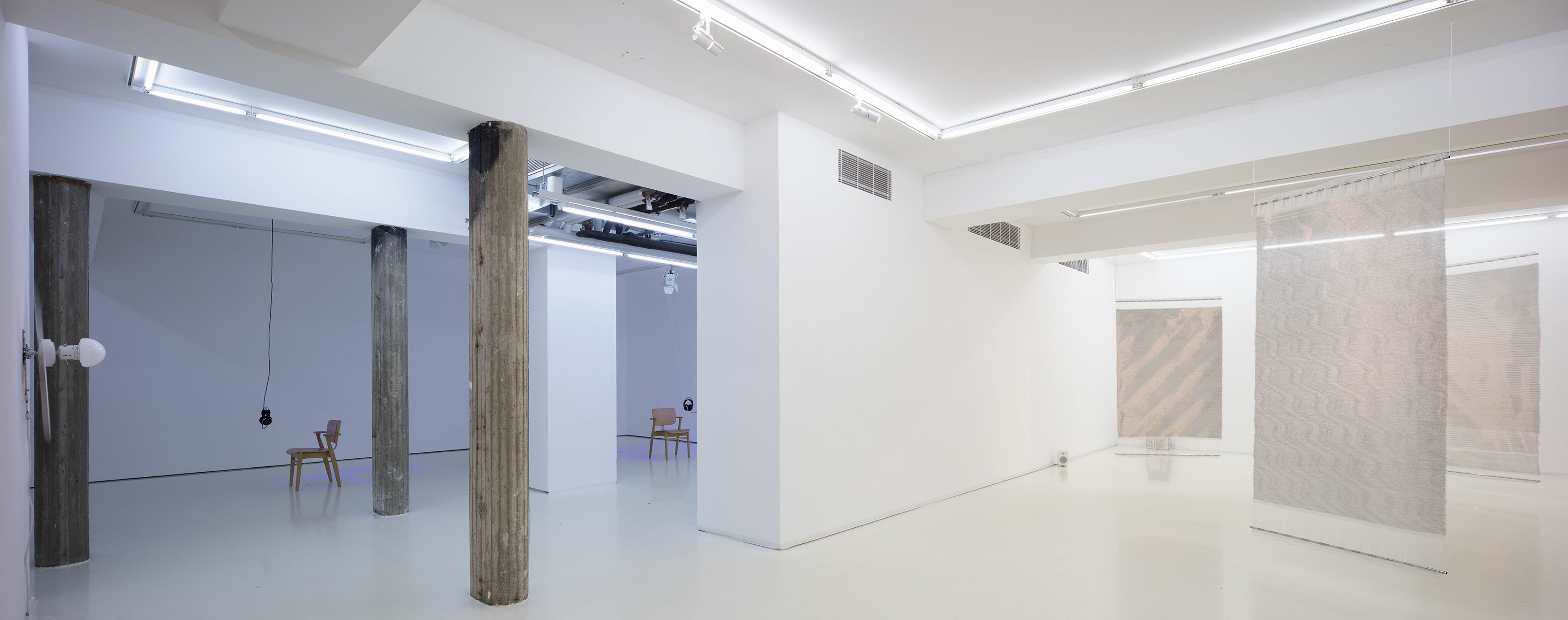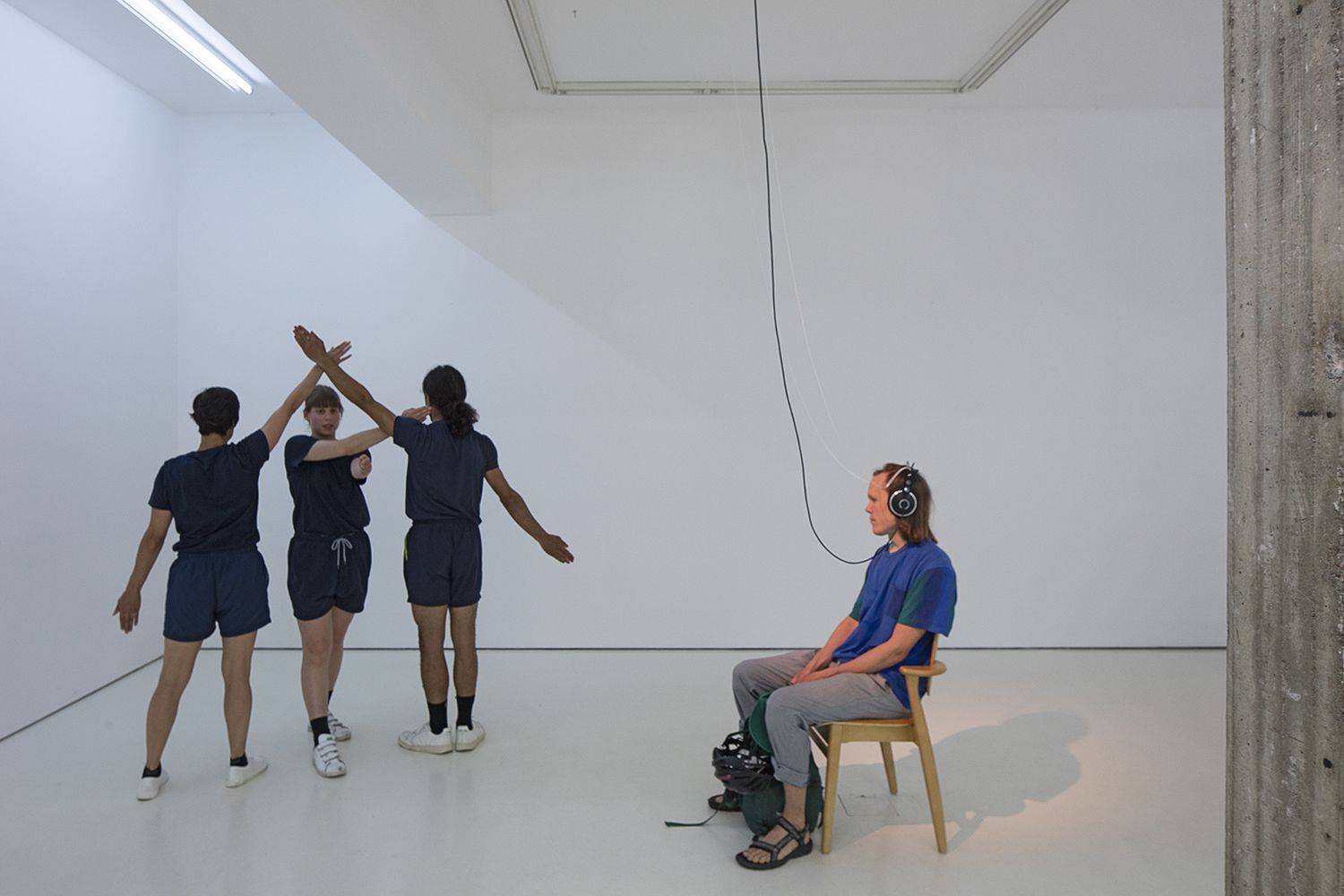| Exhibition | Future Delay |
|---|---|
| Location | Helsinki Contemporary |
| Date | 2019, Jun 6–Jul 1 |
| Artists | Hans Rosenström Madeline Hollander Pearla Pigao |
We live on the precipice of total simulation. As technologies further proliferate and dominate daily life and basic organic functions, the perception and fulfillment of biological needs and desires is in danger of being totally hijacked by technologies that generate the self and its surroundings. Digital reality, presented through various mediums with an increased level of bodily incorporation (sound, video, holography, VR, AR, and so on) and distribution channels (television, social media, internet advertisements, etc), have an uncanny ability to alienate oneself. Jean Baudrillard’s concept of the simulacra —copies that depict things that either had no original, or that no longer have an original— has finally been realized.
As cautiously proferred nearly fifty years ago by the American media theorist and video pioneer Paul Ryan, in reaction to the increased use of hyper-connectivity and video technologies in a fragmented modern, post-war society, “One moves in a vicarious experience of intimacy with an electronic image that cannot respond in real time.” Ryan however sought an optimistic solution, positing in his iconic text, Cybernetics of the Sacred (1973), that video technology could in fact save the human species. Imagining a utopic future, Ryan was part of a larger cohort of video pioneers who —in the words of Ina Blom— investigated the cybernetic continuity between biological and technical modes of being, as well as nascent ideas of artificial life. For these artists, a techno-utopic future was one where individuals developed into communities, connected through —and integrated within— technology.
Concurrently, and similarly, on the other side of the Atlantic, the Finnish multimedia artist Erkki Kurenniemi imagined the technological capabilities going one step further: that video could preserve, supplement, or even replace, the human experience. From Kurenniemi's point of view, a techno-utopic future is one where humankind’s “slime-based”, ”sluggishness, uncertainty, forgetfulness, and fatigue” is complemented by artificial intelligence, realized by technologies that will soon outpace the human brain. His position was optimistic in that —rather than accepting the inevitability of biological death— we could reframe our perspective towards imagining virtual and technological immortality.
This exhibition, Future Delay, presents work by three contemporary artists who are presenting alternative modes of integration between humans and technology, attempting to resolve the sharp detour from the utopia of the 1960s to the dystopia of the 2010s. This exhibition is about feedback between humans and machines placed alongside the dimension of time; time being only perceivable against a background of mortality. Precluding Kuriniemmi and Ryan's ideas about video technologies and cybernetics, and also precluding the current corporate investment into virtual immortality (by magnates like Elon Musk, Mark Zuckerberg or Dmitry Itskov), the Argentine writer Adolfo Bioy Casares imagined —in his novella, The Invention of Morel (1940)— an immortality achieved through the technology of holography. As the protagonist of this story discovers, this programmed immortality, achieved via machine, is superior to his own sufferable mortality.
Departing from a line of ideas developed by the aforementioned writers, theoreticians and artists, this exhibition and its accompanying text and programming asks us whether technological immortality can replace biological mortality. Technology promises today, as religion promised for millenia, a stare into the abyss of death, but with a happy ending. What would future delay appear as, and how would interference and synchrony between transmission and reception in both organic and technological beings manifest? Are humans choreographing a future integrated with machine, or are the machines choreographing us?

1/2 
2/2